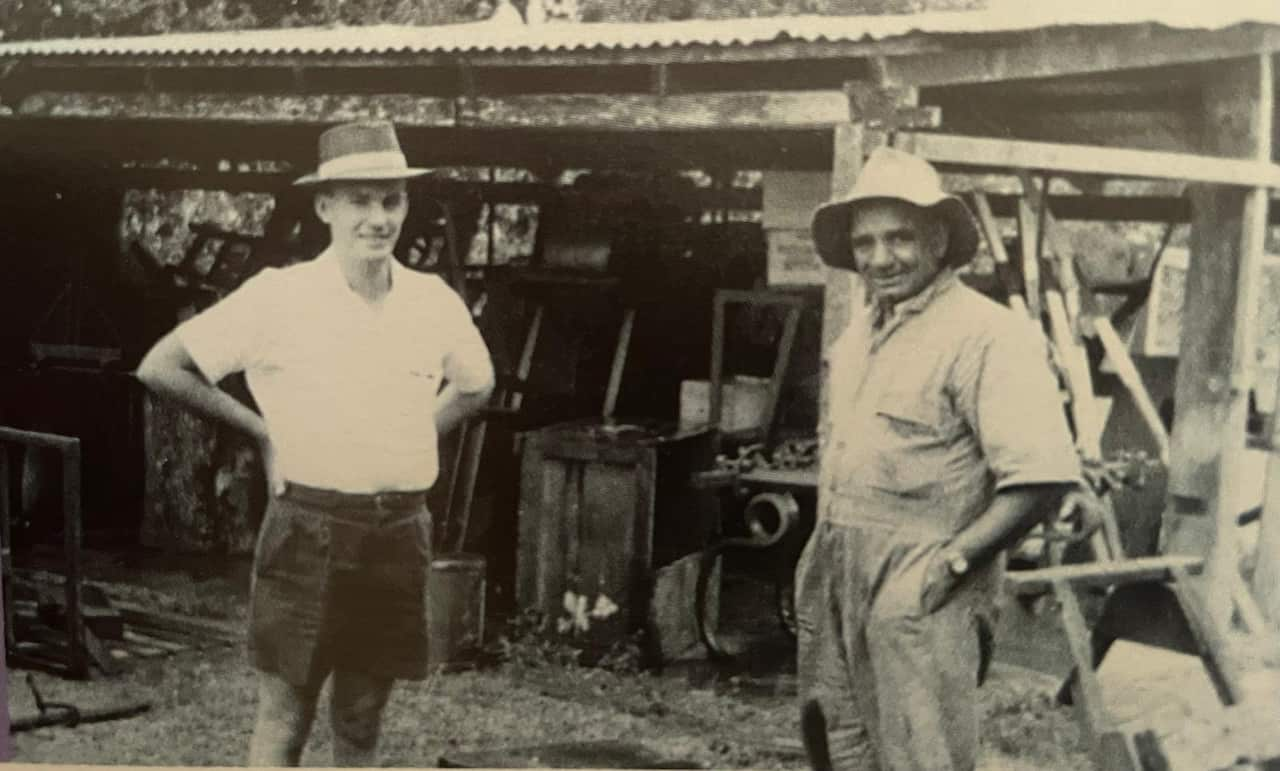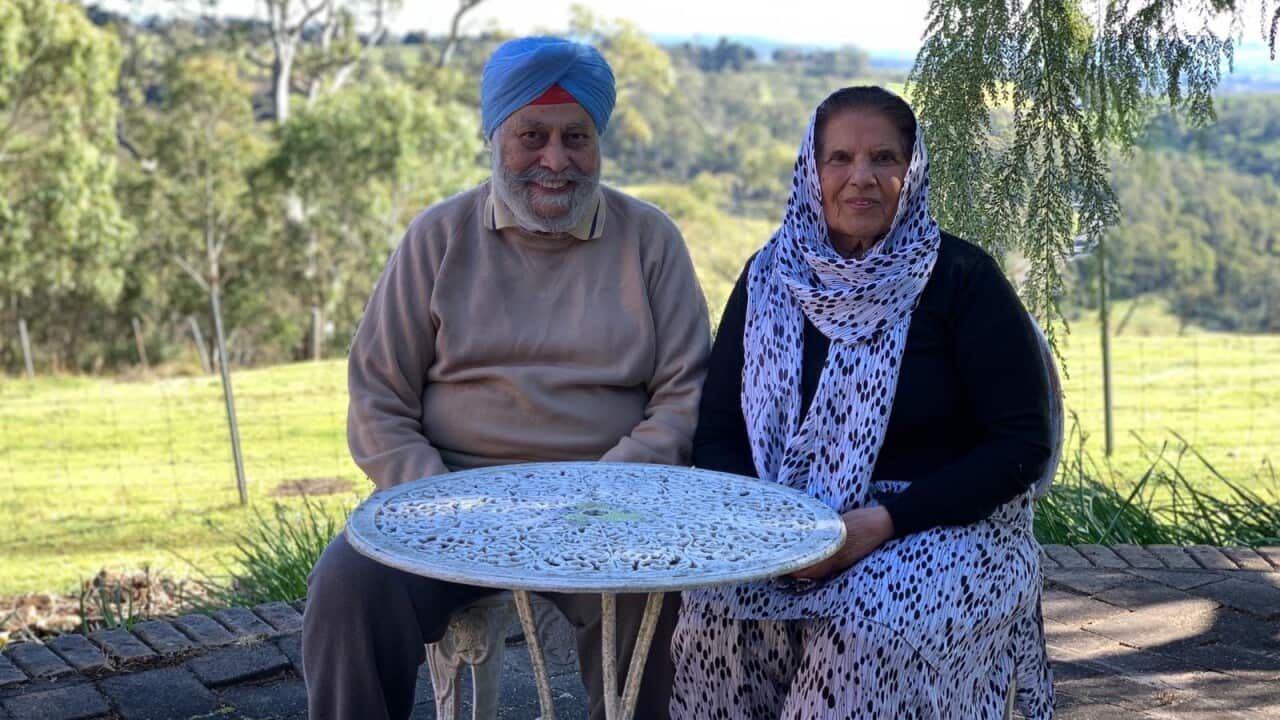Highlights
- Cairns’ Bains family has been into sugarcane farming for four generations
- Andrew Ranbir Singh’s ancestors migrated to Australia from India in the 19th century
- Their 100-acre shared plot in 1948 has grown into a 1500-acre agribusiness with an annual yield of 60,000 tonnes
Thirty-seven years old, Andrew Ranbir Singh was born and brought up on the farmlands that his forefathers acquired 73 years ago and developed into a large-scale sugarcane agribusiness.
What began as a 100-acre shared agricultural plot in1948, has grown into a 1500-acre agribusiness with an annual yield 60,000-tonnes, spread across the districts of Mareeba, Gordonvale and Tully in Far North Queensland.
Speaking to SBS Punjabi about his family's sweet success, Andrew says he considers himself lucky to be reaping the harvest of the seeds sown into the Australian soil by his ancestors who migrated from Punjab in northern India in the 19th century.
The beginning
Reminiscing his family heritage, Andrew says it all began with the arrival of his great-great grandfather Mangal Singh Bains on Australian shores in 1893. He migrated from a village in Punjab’s Jalandhar district, which is known for contributing a generous chunk to the Punjabi diaspora spread across the world. After landing in Melbourne, Mangal found work as a hawker while travelling across regional Victoria. He later travelled to India but soon returned with his son (Andrew’s great grandfather) Don Daleep Singh Bains in 1925.
After landing in Melbourne, Mangal found work as a hawker while travelling across regional Victoria. He later travelled to India but soon returned with his son (Andrew’s great grandfather) Don Daleep Singh Bains in 1925.

Andrew Ranbir Singh Bains is a fourth-generation sugarcane farmer in Cairns in Far North Queensland. Source: Supplied
“Those were tough times. The father-son duo travelled to North Queensland for work. They started to clear heavy rainforest scrubs by hand and chopped trees to clear the land for agricultural purposes,” Andrew recalls.
Don gradually moved to the coastal town of Gordonvale near Cairns in 1939, where he found work as a cane cutter.
It was his hard work and honesty that helped him forge a special relationship with his employer and landowner George Perry.
“In 1948, Mr Perry offered Don to share the lease of his 100-acre sugarcane farm with an option to purchase it after two years. This marked the beginning of my family's journey into Australia's sugarcane industry,” Andrew recollects.
Once settled, Don brought Andrew’s grandfather, Gian Singh Bains to Australia in 1951.
“Both Don and Gian worked on the 100-acre farm and cut cane by hand for other farmers in the area well into the 1970s,” he recalls. The growth
The growth

A file photo of Mangal Singh Bains who came to Australia in 1893. Source: Supplied
Gian Singh passed on the baton to his sons Srinder and Rajinder, who went to university for higher studies but returned to their roots — with a wealth of knowledge and a desire to grow.
“At that time, it wasn't easy to buy land in the Cairns region. But soon, my grandfather got an opportunity to purchase an uncleared jungle in the Mareeba district, 100 km west of Cairns.
“He purchased the land in 1989. The family then cleared the dense forest with bulldozers and made it fit to grow sugarcane,” he says. From manual to mechanised farming
From manual to mechanised farming

A file photo of Don Daleep Singh with Qld cane farmer George Parry. Source: Supplied
As the years passed, the Bains family had more workforce and higher production.
Andrew says the real reason behind their success can be attributed to the fact that with the advent of technology, none of his elders was reluctant to embrace the changes witnessed by the sugarcane industry.
While machines invaded farms between 1960 and 1980, the 1990s brought new harvesting techniques, such as green cane harvesting.
One of the innovative techniques employed by the Bains family was shredding the residue from the sugarcane and putting it back onto the paddocks as mulch that helped retain moisture in the soil and also provide weed-control.
“Our family embraced these monumental changes. We purchased our first sugarcane harvester in 1983. Initially, we used it in our own farms, but in 1993, we began contract harvesting in the Mareeba district,” Andrew says.
“Our harvesting group set a record in 1995 by harvesting 150,000 tonnes of green sugarcane in a 22-week season,” he recalls. The challenges
The challenges

Gian Singh Bains with his sons Rajinder Singh and Srinder Singh (photo taken in 1990). Source: Supplied
In the mid to late 1990s, the sugar industry witnessed a massive downturn due to the oversupply of sugar in the world market.
Andrew says this triggered a slump in the cane industry, leading to a spike in costs including wages, fuel, fertiliser and electricity.
“During this phase, many of the older generations encouraged young people to go out and study in universities and find corporate jobs,” he recollects.
“We also followed this route. My cousins and I got tertiary qualifications and found non-farming jobs to get us through the hard times.
“I joined Westpac's graduate program in the agribusiness department where I worked for two years before returning to the family business. In 2016, my younger brother also decided to come back to the farm, after serving in the Australian Defence Force for five years,” he says. Raising cane to going bananas
Raising cane to going bananas

The sugarcane cultivation in Australia is dependent on heavy machinery. Source: Supplied
The Bains family later diversified into banana plantation and purchased land for this purpose in the Tully district, 150 km south of Cairns.
“Expanding into banana plantation offered an opportunity for our business to reduce our reliance on sugarcane,” Andrew says.
“But moving into horticulture came with its own set of challenges. Whilst sugarcane is a seasonal crop that is harvested once a year with the season lasting four-to-six months, bananas are an all-year-round crop, which means we have to toil 52 weeks a year, come rain or shine,” he adds. Family, culture and heritage
Family, culture and heritage

In a day’s work at banana plantations, near Cairns, FNQ. Source: Supplied
The Bains family takes immense pride in its culture and Indian heritage.
“My family, though it tasted success in Australia, has always remained very close to its Sikh and Punjabi heritage. My grandfather, Gian Singh Bains, donated land from one of our farms to the Queensland Sikh Association to build the state's first Sikh temple in 1983,” Andrew says.
He may be a fourth-generation Australian-Indian, but his childhood was steeped in stories from his ancestral village in Punjab, its culture, language and traditions.
“Punjabi was my mother tongue. I picked up English only when I went to school. My wife also hails from Punjab. We have a daughter and a son, who are now sixth-generation Australian-Indians,” he says. The Bains family considers itself lucky to be living in regional Queensland.
The Bains family considers itself lucky to be living in regional Queensland.

Andrew with his wife and children. Source: Supplied
“I think North Queensland is one of the most beautiful places to live in the world. We have a World Heritage-listed rainforest, mountain ranges to our west and the world-famous Great Barrier Reef along our coastline,” Andrew says.
“I do understand that there are more opportunities for youngsters in metropolitan cities, but for people who harbour a love for land and farming, regional Australia is the place to be,” he concludes.
Click here to listen to the full interview:
LISTEN TO

Sweet success: How a migrant farming family strengthened its roots in Australia’s sugarcane sector
SBS Punjabi
13:44










